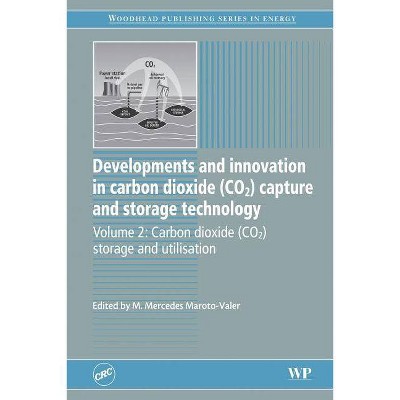Advances in Carbon Dioxide Compression and Pipeline Transportation Processes - (Springerbriefs in Applied Sciences and Technology) (Paperback)

Similar Products
Products of same category from the store
AllProduct info
<p/><br></br><p><b> Book Synopsis </b></p></br></br><p>Providing a comprehensive analysis of CO2 compression, transportation processes and safety issues for post combustion CO2 capture applications for a 900 MW pulverized hard coal-fired power plant, this book assesses techniques for boosting the pressure of CO2 to pipeline pressure values with a minimal amount of energy. Four different types of compressors are examined in detail: a conventional multistage centrifugal compressor, integrally geared centrifugal compressor, supersonic shock wave compressor, and pump machines. The study demonstrates that the total compression power is closely related to the thermodynamic process and is not determined by compressor efficiency alone. Another problem addressed is that of CO2 pipeline transport from the compressor outlet site to a disposal site under heat transfer conditions. The book also features an analysis of simulations and models that are used to determine the maximum safe pipeline distance to subsequent booster stations as a function of inlet pressure, ambient temperature, thickness of the thermal insulation and ground-level heat flux conditions. This book focuses on compression as well as transportation processes with particular emphasis on the safety risks related to the transport of CO2. The most important problem in terms of environmental protection is ensuring precise and reliable hazard identification. As hazards can only be managed effectively if they are properly identified, problems involving the discharge and atmospheric dispersion of CO2 are also discussed.</p><p/><br></br><p><b> From the Back Cover </b></p></br></br>Providing a comprehensive analysis of CO2 compression and transportation processes and safety issues for post combustion CO2 capture applications for a 900 MW pulverized hard coal-fired power plant, this book analyzes techniques to boost the pressure of CO2 to pipeline pressure values with the minimal amount of required energy. Four different types of compressors are looked at in detail: a conventional multistage centrifugal compressor, and integrally geared centrifugal compressor, a supersonic shock wave compressor, and pump machines. This study emphasizes that the total compression power is a strong function of the thermodynamic process and is not determined by the compressor efficiency only. Another problem analyzed in this work, is the CO2 pipeline transport from the compressor outlet site to a disposal site under heat transfer conditions. This book also features analysis of simulations and models that are used to determine the maximum safe pipeline distance to subsequent booster stations as a function of the inlet pressure, ambient temperature, thickness of the thermal insulation and ground level heat flux conditions. This book focuses on compression as well as transportation processes with particular stress on the safety risk related to the transport of CO2. The most important problem in terms of environmental protection is a precise and reliable hazard identification. As hazards can only be managed effectively if they are properly identified problems involving the discharge and atmospheric dispersion of CO2 are discussed. <BR>aq<P><p/><br></br><p><b> About the Author </b></p></br></br>Andrzej S. WITKOWSKI is Professor of Mechanical Engineering at the Silesian Technical University of Technology in Gliwice, where he received his doctor and habilitated doctor degrees. He has more than 50 years of teaching, research, and consulting experience in compressors and fans, wind turbines, aerodynamics, experimental and fluid dynamics. Most of his research is focused on detailed understanding and modelling of the flow field in turbomachines. The specific areas include the rotor wake steady and unsteady flow field in a single-stage compressor, the rotor-stator interaction, and the rotor stall inception in the axial flow low-speed compressor stage. His experience covers a wide spectrum including experimental work, analytical and computational modelling, and improvement in compressor performance through loss correlations. He developed and equipped the axial flow compressor stage laboratory at the Technical University in Gliwice, which now comprises an axial flow low-speed compressor stage. This makes it possible to measure the unsteady flow field in the rotor blade-to-blade channels with the use of three different anemometer systems. He has been involved lately in the analysis of compression and transportation processes for post-combustion CO2 capture applications for pulverized coal-fired power plants. He has received numerous awards granted by the Polish Ministry of National Education. <br>This work is supported by the Polish National Centre of Research and Development in the framework of the Contract: Strategic Research Programme (Advanced Technologies for Energy Generation).
Price History
Price Archive shows prices from various stores, lets you see history and find the cheapest. There is no actual sale on the website. For all support, inquiry and suggestion messagescommunication@pricearchive.us




















